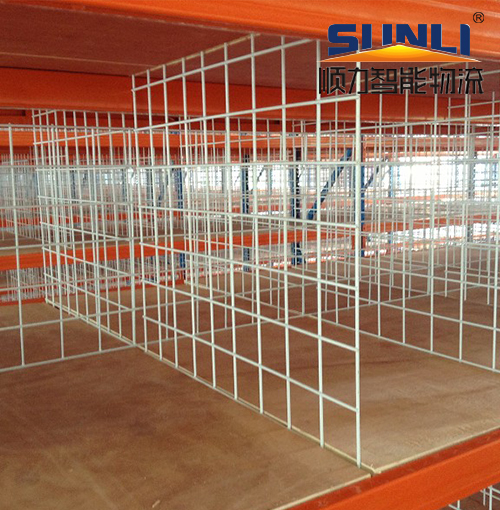Storage shelves The installation process of mainly includes the following steps:
1、 Preparation before installation
Site clearance and inspection
First, ensure that the warehouse where the shelves are installed is clean and flat. Clean sundries, dust and obstacles on the ground and check the flatness of the ground. If the ground is uneven, it may affect the stability of the shelf. For high-precision shelf installation, the flatness error is generally required to be within a certain range, such as ± 3mm per square meter.
At the same time, it is necessary to check whether the space size of the warehouse meets the design requirements of the shelves, including the height, length and width of the warehouse, as well as the positions of columns, doors and windows, so as to avoid conflicts between the shelves and these building structures after installation.

Preparation of tools and materials
Prepare various tools required for installation of shelves, such as wrench, screwdriver, tape measure, level gauge, etc. Forklifts, cranes and other equipment may also be used to transport and install large components for the installation of heavy shelves.
Check whether the components of the shelf are complete, including columns, beams, connectors, anchor bolts, etc., and check the quality of the components, such as whether the columns and beams are deformed, whether the surface is scratched or damaged, etc.
Personnel organization and training
Arrange experienced installation personnel and provide safety and technical training to the installation team. Clarify the responsibilities of each installer, explain the installation process and precautions, especially the requirements for safe operation, such as how to use tools correctly and how to avoid the danger of shelf collapse.
2、 Foundation installation
Installation of foundation bolts
Mark the position of anchor bolts on the ground according to the design drawing of the shelf. Use tools such as impact drill to drill holes at the marked positions, put the anchor bolts into the holes, and fix them with nuts and washers. The depth and spacing of anchor bolts shall be installed in strict accordance with the design requirements. Generally, the depth of bolts shall reach a certain value. For example, for medium-sized shelves, the depth of anchor bolts may not be less than 150mm to ensure that the shelves are firmly connected to the ground.
Horizontal adjustment
After installing the foundation bolt, use a level gauge to adjust the top of the bolt horizontally. It is a key step to ensure the overall verticality and stability of the rack by adding shims at the bottom of the bolts to make the top of all foundation bolts on the same horizontal plane.
3、 Column installation
Column positioning and fixation
Place the columns on the foundation bolts according to the designed spacing and arrangement, and preliminarily fix them with nuts. The perpendicularity of the column is very important. During installation, use tools such as plumb line or laser plummet to check whether the column is vertical. Generally, the perpendicularity error of the column shall not exceed a certain range, such as ± 3mm per meter.
For multi-layer shelves, when installing the upper column, ensure the alignment accuracy of the upper and lower columns, and use connectors to firmly connect the upper and lower columns together.
4、 Cross beam installation
Connection of beam and column
Insert both ends of the beam into the slot or hole of the column, and use special connectors (such as safety pins, bolts, etc.) to fix the beam and column. During the connection, ensure that the beam is installed horizontally, and use a level gauge to check and adjust. For the cross beam of heavy shelves, the bolts shall be tightened according to the specified torque to ensure the strength of the connection.
Reasonably arrange the number of layers and spacing of beams according to the design of shelves. The distance between beams shall be determined according to the size and weight of the goods stored. For example, for the shelf for storing standard pallets, the distance between beams shall be slightly greater than the height of the pallet to facilitate the placement and removal of the pallet.
5、 Overall adjustment and reinforcement of shelves
Overall inspection and adjustment
After installing the cross beam, check the whole shelf. Check the overall perpendicularity and levelness of the shelf, and the connection firmness of each component. If it is found that it is not vertical or horizontal, adjust it in time.
Check whether the channel size of the shelf meets the design requirements, and the channel width should be able to meet the passage of forklift and other handling equipment, generally considering the model of the forklift, turning radius and other factors. For automated shelves, check whether the interface with the automation equipment is accurate.
Reinforcement measures
Reinforce the shelves as needed. For some shelves that may be subject to greater impact force (such as the part close to the forklift passage), additional support structures or reinforced connectors can be added. At the same time, the surface of the shelf shall be subject to anti rust treatment, such as spraying anti rust paint, to extend the service life of the shelf.
6、 Acceptance after installation
security check
Check whether necessary safety protection facilities are installed on the shelves, such as anti-collision guardrails, cargo fall protection devices, etc. Ensure that these facilities are firmly installed and reasonably located.
Check whether obvious warning signs, such as "No Collision" and "Height Limit", are set around the shelves to remind operators to pay attention to safety.
functional testing
For shelves with special functions (such as automated shelves Corton Flow And so on), carry out functional test. For example, automated shelves need to test whether their communication with the control system is normal, and whether the stacker can accurately run and access goods in the shelf lane; Fluency shelf shall check whether the fluency of goods is good.
Carry out load test. According to the designed bearing capacity of the shelf, place simulated goods of corresponding weight in some cargo spaces and observe the deformation of the shelf. It is generally required that the deformation of the shelf under the rated load should be within the allowable range. For example, the deflection of the beam should not exceed a certain value (for example, L/250, L is the beam span) to ensure the safe and reliable use of the shelf.












